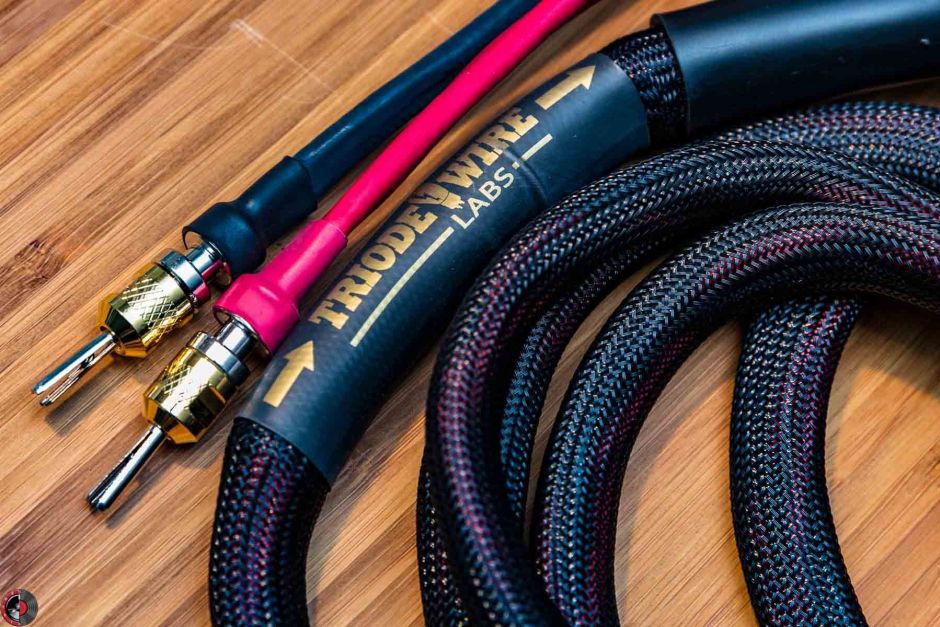
After I installed the full loom of cables from Triode Wire Labs and gave them a chance to break-in as explained in Part 1 of this review, I settled down for my initial morning listening session.
I put the first album on, dropped the needle, and began to make some notes. The first word that flowed from my pen was “human”. The voice that came out of my speakers simply sounded human. I did not have any sense of it being electronically reproduced. I was totally comfortable with the sound as it was very much like a real person singing right there in my listening room.
My next words were, “These cables were designed by someone who listens to MUSIC!” As a reviewer, I get to hear a lot of different components, and it becomes apparent when I hear a product that has been voiced by someone who understands how music can touch you. You know it when you hear it. It is just right. Nelson Pass’s epic SIT-3 amplifier comes to mind. Incidentally, you can read Jack’s review of the SIT-3 here.
The same is true with these cables from Triode Wire Labs. You immediately know that Pete Grzybowski, founder, understands what a system should sound like in order for you to become emotionally involved with the music and the artist. After listening for a while, I put my pad down and proceeded to just listen and enjoy a few albums and CDs.
Let’s Get to the Cables
As the weeks went by, I noticed that there was some improvement in the staging and openness of the sound from these cables over the first 100 hours. After that, the cables stabilized. I’ve noticed that for virtually all brands of cables it is best if you try not to disturb them once they are broken in. Simply moving the cables around has a small impact on the sound, and it usually takes 24-48 hours to get them back in the groove. So now, let’s get on with reviewing these cables.
Spirit II RCA Interconnects
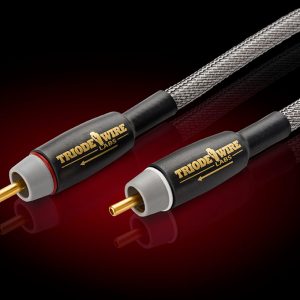
The Spirit II RCA Interconnects consist of an aircraft aluminum body with a very low mass center and ground pins, both of which are high purity copper that has been 24K gold flashed. The signal conductors are seven-nines pure (99.99999%) OHNO copper.
The outer jacket is organic cotton with an open mesh cover. They are disarmingly light, but they do not feel fragile.
Spirit II XLR Interconnects
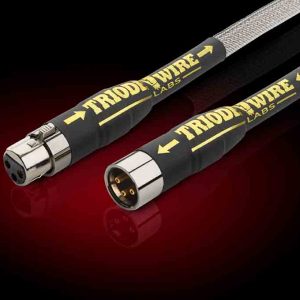
The Spirit XLR Interconnects use a brass-bodied connector and ground pins, both of which are high purity copper that has been 24K gold flashed. These interconnects are tonally rich and wonderfully revealing. They will capture your heart from the moment you first hear them.
Everything about them is organized and presented in a way that just seems right. My mind and body relaxed and accepted the sound rather than trying to “process it” as happens with so many other cables. They are also exceptionally neutral sounding. I think you will find like I did, that you could listen to music for hours on end.
The bottom line is that these are great cables for an affordable price. I hate to even mention the words “affordable price” because I am afraid you are going to read this to mean that they are great cables at their price point. Please do not succumb to that interpretation. I’ll say more about the price later in the review.
American Speaker Cables
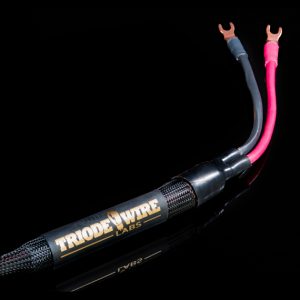
I also auditioned the American Speaker cables, which consist of 210 strands of 30awg conductors and 420 conductors in the bi-wire format. They employ “ground plane” technology that is said to reduce noise by passively increasing rejection of EMI/RF. High-quality Cardas connectors are attached with Cardas solder for the Banana connectors or via “cold welding” for the Cardas spades. The copper spade attachment method uses hydraulic compression of 16,000 lbs. to compress and fuse the wire to the connector. This cold-fused/cold-welded technique provides a perfectly bonded joint without solder.
You should also note that the last steps in production for all of the Triode cables are that they are cryogenically treated and then burned in on an audiodharma HI-POWER Cable Cooker™. Pete describes it as a “preliminarily burn-in” stating that additional run time in your system will yield more sonic improvements.
These cables have excellent tonal density and toe-tapping rhythm that quickly got me involved in the music. The soundstage is wide and deep and the instruments are well outlined with a very good sense of space. With tremendous energy that never feels like it is approaching a limit, they also sound like someone took the power governor off of the system.
They will sound best in a neutrally balanced system. By that, I mean they will not add any particular coloration to the sound. You cannot use them as cables to cure other issues in your system. In fact, doing just that with any cable will certainly get you a ticket on the audio cable merry-go-round as you “chase” the sound you want.
American Series Power Cords
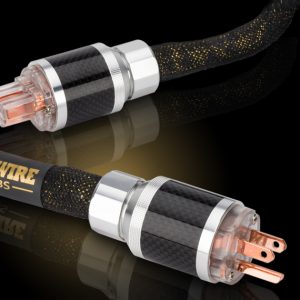
The American Series power cords use, among other things, RF conductive silver mylar and carbon-infused Tech flex sleeving in varying degrees depending on the application. They are terminated with Furutech connectors. They are also offered in varying gauges depending on the application.
These come in a 12-gauge, 10-gauge, and 7-gauge versions. I used the 10-gauge version I received to audition my Vinnie Rossi L2 SE integrated amp and my DS Audio W-2 Phono Eq. In both cases, a wonderful soundstage emerged, the tonal balance was excellent, and the background was dead quiet. These are exceptional power cables and have to be one of the best values in the industry.
American Digital Series Power Cords
The American Digital Series power cords are specifically designed for digital components like your DAC, Transport, or CD player. There is also an American High Power Digital power cord for power conditioners, digital preamplifiers, and regenerators. All use conductive gold or silver mylar sheathing and conductive carbonized external sleeving to varying degrees and a slightly different dielectric. Particular attention is paid to the additional reduction of RF interference that digital components are highly sensitive to.
I had two of the standard American Digital power cords that I used on my Esoteric Transport and Border Patrol DAC and another in-house DAC. With the Triode cables, all of these pieces had a more relaxed presentation that was closer to the sound of my analog front end. They didn’t obscure detail but simply reduced the “tension” I normally feel when I listen to a digital source. There was a definite reduction of what Pete calls “Digititus”, which he describes as that “fatiguing sound in digital reproduction that is not usually experienced in analog playback.“
Obsession Power Cord
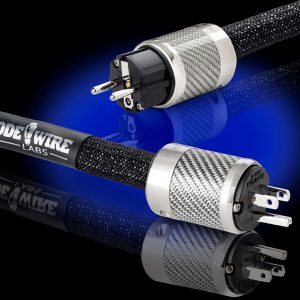
This is Pete’s “Big Boy” power cord that he has thrown everything he knows into. The cable includes the very impressive sounding Furutech NCF power connectors.
I tried this cable on my Vinnie Rossi, and for the first 24 to 48 hours it had some break-in to do. It was a touch edgy and a bit disorganized. After approximately 50 hours, however, the Vinnie Rossi rose to sonic heights that I had not previously heard from it. It exhibited explosive dynamics with a dead quiet background and superb bass quantity and quality. Instruments and details, while retaining their individuality, melded together to become music.
This is a GREAT power cord in an absolute sense. At $1,399.00 it is the most expensive cable in the line. I can tell you, however, that it slew power cords I have had that cost five times as much. If you can reach for it, I highly recommend you try it.
Ten Plus American Series Power Cord
If you have stayed with me this far you must have a real interest in audio system cabling or you are simply one of those people who can’t turn away from looking at a slow-motion train wreck. Here we go…I’ve got to tell you about this power cable that made my turntable sound better. No, I’m not kidding.
When Pete and I were discussing what cables I would need for the review, I told him I use a VPI Classic 4 turntable. Immediately, he mentioned that he wanted to send a Ten Plus American Series power cord for me to use on it. He told me to try it on the table and see if I heard a difference. He was confident I would.
Ok people, I can hear the mumbling already. We are talking about a power cord on an AC motor making a difference in the sound of a turntable!!?? Well, this wasn’t the first time I had heard of this, but I have never explored it. So I told Pete, “Throw one in the box, and I will give it a try.”
A bit of background…I will tell you I am a VPI “tweaker”. I have changed feet, tried different run capacitors, switched to the HRX pulley with three belts, tried different mats, used the SDS and the ADS and no power regenerator, tried electrical tape on the platter, tried different record weights, modified record weights, listened with or without the Periphery ring, rewired my arm and junction box, listened to different greases and oils on the bearing, applied the “Gary Kink” to the tonearm wiring and on and on… Yes, I could be committed to the looney bin. Trying a power cord was right up my alley.
So, I got out the note pad and I began listening to a few albums for a baseline, and then I switched to the Triode Wire Labs Ten Plus American power cord. My notes read, “Better Dynamic Expression and better Pace Rhythm and Timing (PRaT). Not insignificant.” I went back and forth at least half a dozen times with the same result.
Each time I used the Triode Ten Plus the sound from the VPI was more dynamic and its toe-tapping factor increased. If you have a VPI, I would suggest you give it a try. I can’t vouch for other turntables, but I suspect anything that uses an AC motor will respond positively to the Ten Plus. At $399.99 there is no question that this power cord will be staying on my turntable.
Price Points and Triode Wire Labs Cables
Ok, so you’ve guessed by now that I am smitten with these cables. The price points are the icing on the cake. And, please note, the prices listed below are not typos.
- Interconnects starting at $399/ pair
- Power cables starting at $249/pair
- Speaker cables starting at $699/pair
- Digital cables starting at $249/m
Caveat: The High-Resolution Race
In my opinion, for the last 15 years or so there has been a high-resolution race going on in high-end audio. The primary focus of this race is highlighting detail at the expense of the overall musicality of an audio system. I fell victim to this pursuit for a few years at the turn of the century only to find out that I was going down the wrong path.
I blame the audio reviewers for this shift in focus. It is as if we have forgotten why we have a system. We have a system to listen to MUSIC, not to listen to equipment that was designed with the primary goal to put music under an audio microscope and dissect it.
The good news is that the tide seems to be turning, and I am seeing more and more importance being focused on reproducing music and its emotional impact and less on the ability of the component to dissect it. Think of your system as a wonderful musical instrument and not an analytical tool.
However, if you are currently a participant in this resolution race, and I can fully respect that, Triode Wire Labs cables are not for you. Does that mean these cables are dull, dark, or not resolving? Not in the least. In fact, I have heard more information with these cables in my system in the last two months than ever before. However, this information is not “spotlighted” as it is done by many cables. “Spotlighting” inevitably results in listener fatigue and dissatisfaction with the cables.
With Triode Wire Labs cables the information is revealed because of Pete’s work with lowering the noise floor. This enables information that was previously buried to emerge and fully contribute to the sound and emotion of the music. Details are naturally presented and not overhyped to get your attention.
Marketing and Triode Wire Labs Cables
Now, let’s go back to that comment I made earlier about “a great cable at their price point.” Audiophiles complain about the high prices in the audio industry, and there is certainly some validity to that line of thinking. On the other hand, customers typically do not give enough credit to products that are reasonably priced. In marketing, we know that people often equate excellence with the price. This is true in any industry, for example, cars, cameras, wines, and more to the point, high-end audio. Common sense tells us the higher the price, the better the product. Right?
There are a number of stories of manufacturers that had a great product at a reasonable price that sold poorly. So what did they do? They came out with an MK II version and substantially raised the price. Presto, the sales took off.
People expect an expensive product to be better than a less expensive one. This is not always the case, and it is certainly not the case with Triode Wire Labs cables. These cables handily outperform many of the expensive cables we see in the industry. My point is, do not underestimate these cables because of their price point.
Instead, I suggest you move quickly to take advantage of what Triode Wire Labs currently offers before Pete figures out he has seriously underpriced these cables. He does offer a 30-day evaluation period, so what do you have to lose?
Conclusion
If I can convey anything to you in this review it is that these cables will speak to you musically. Their natural balance and dynamic expression along with great sound staging and ability to retrieve detail without being bright or etched in any way is absolutely intoxicating. They are harmonically rich without sounding slow or dark. Micro and macro dynamics are excellent and really get you involved in the flow of the music. My foot was worn out from the tapping it did while I listened to music.
These cables do not recreate the event as if you were plugged into the mixing board and wearing headphones. They recreate the event as if you were sitting there in front of the performer.
In the end … that is all I am looking for.
As I said at the beginning of this review, Pete’s goal is to produce “exceptionally natural musical fidelity” in his cable designs. Mission accomplished Pete! And, very highly recommended!


1 thought on “Review: Triode Wire Labs Cables, Part 2”